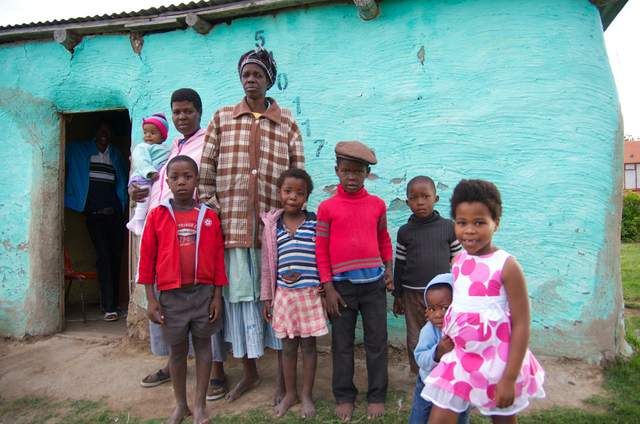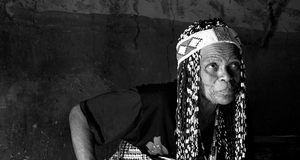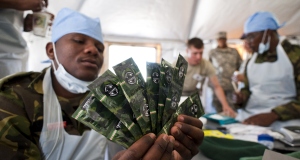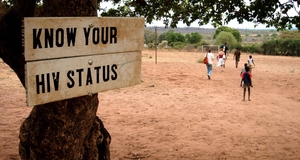A High Standard of Living, Brought Low by AIDS in South Africa
By
2010, Vol. 2 No. 01 | pg. 1/2 | »
KEYWORDS:
In 1994 South Africa's regime of apartheid, under which the black majority was suppressed and discriminated against by the white minority, came to an end.1The African National Congress (ANC) won the first free elections in the same year, and the paty has held power ever since. When Nelson Mandela became president, he and his party promised to improve the welfare of the hitherto-neglected African population. Former president Thabo Mbeki restated these goals in his 2008 State of the Nation Address, saying that South Africa must focus on the following goals: “building the infrastructure [needed] to achieve [South Africa's] economic and social goals;” “poverty eradication;” “targeting the critically important area of education and training;” and finally, “health for all.”.2But as we enter 2010, what impact has this economic program had on the standard of living for the average South African? The traditional measure of progress is GNP, or gross national product.3However, in the past two decades, a general consensus has arisen that GNP does not paint a full picture of a country's well-being. The International Monetary Fund (IMF) instead has begun to index GNP to a purchasing power parity (PPP). PPP is intended to give a more accurate picture of the economic status of a nation, by accounting for differences in cost of living. In other words, “people in developing and transition economies are able to purchase a greater quantity of goods and services with a smaller amount of money.”4The question therefore arises, does having a higher level of established social welfare systems, such as public education or health programs, cause a state to have a higher standard of living than might otherwise be anticipated from analysis of GNP (adjusted for PPP) alone? These programs should in theory mitigate some of the negative standard-of-living effects associated with a low per capita income. Avuile, a 9-year old HIV+ child who has been on anti-retroviral drugs since he was 18 months old, and his family outside their house in Bell, South Africa. Photo: Flickr/@PWRDF CC-2 In 2007, South Africa's GNI as measured by the Atlas method in US dollars, was $5,760 per capita, placing it at 88th of 209 countries surveyed in a World Bank study, between Lebanon (87) and Costa Rica (89).5 (GNI is a slightly altered GNP which takes into account foreign remittances as well as domestic production.) However, its PPP was much higher at $9,560 per capita. By either calculation, South Africa fares far better than most sub-Saharan African nations, and is one of the leading developing countries in the world. The United Nations Development Program, or UNDP, has compiled a Human Development Index (HDI), which is intended to “[look] beyond GDP to a broader definition of well-being.”.6 HDI is a composite of life expectancy, literacy and school enrollment rates, and PPP. HDI is therefore the most comprehensive index for determining standard of living. South Africa is classified as a state of “medium human development,” and ranks at #121 of the 177 countries surveyed most in 2005, its most “globalized” neighbors in the rankings being Egypt at 112 and India at 128, with a smattering of smaller countries such as Botswana or Guatemala in the intermediary positions.7 Numerically, South Africa placed in the upper end of the middle at about 0.67, with Iceland the highest at 0.97 and Sierra Leone the lowest at 0.34.8 Since the demise of apartheid in 1994, South Africa's economic and social status have undergone marked changes. GDP annual growth has averaged about 3.5%, with the years 2004-2007 maintaining a 5% increase annually.9 Per capita PPP increased from $5700 in 1994 to $9560 in 2007. Measles immunization for children aged 12-23 months grew from 76% to 85%. And finally, the percent of South Africans aged 7-24 who had completed primary school skyrocketed from 77% in 1992 to a reported 100% completion rate in 2004, the last year for which this statistic is available. It should be noted that a decline in average life expectancy was experienced, to 51 from a high of 63 in 1992, but this can be attributed to the AIDS epidemic which swept Africa in the mid- to late-1990s. This is significant because in May 2000, a solid link was established in a South African government report between AIDS and poverty, with South Africa's economy in 2010 expected to be about 17-20% smaller than it would have been without the disease.10 The White Paper for Social Welfare, drafted as part of the ANC's 1994 Reconstruction and Development Program (RDP), further affirmed that “social development and economic development are two interdependent and mutually reinforcing processes.”.11 Most tellingly for our study of quality of life in South Africa, the poverty level (defined as the percentage of the population living on less than $1 US per day) has plummeted from 35% in the decade 1983-1993, to 10% in the decade 1993-2003 – a staggering drop indicating that a full one-quarter of the South African poor were elevated from that status since the ANC took power.12 What social welfare systems has South Africa implemented since the end of apartheid that may account for these changes? Following the election of Nelson Mandela, a new South African constitution was enacted. In its bill of rights, the South African government's guarantees of social welfare are ennumerated, including “adequate housing”, health care, “sufficient food and water”, social security, and education; each article is followed by the provision, with slight variation in wording, that “The state must take reasonable legislative and other measures, within its available resources, to achieve the progressive realisation [sic] of this right.”13Continued on Next Page » Suggested Reading from Inquiries Journal
Inquiries Journal provides undergraduate and graduate students around the world a platform for the wide dissemination of academic work over a range of core disciplines. Representing the work of students from hundreds of institutions around the globe, Inquiries Journal's large database of academic articles is completely free. Learn more | Blog | Submit Latest in International Affairs |



















